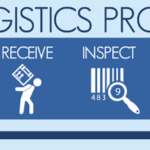2018 Logistics Industry Trend Forecast:Part Three of Three: The New Norm in White Glove Delivery
By Len Batcha
President
Technical Transportation, Inc
The Amazon effect literally impacts every step of the supply chain delivery process today. As customer expectations rise, so do the demands shippers and carriers must satisfy to remain competitive.
It’s a particularly challenging situation for white glove delivery providers, because many aspects of the procedure don’t lend themselves to quick, customer-pleasing solutions that are the driving force behind the Amazon effect.
But that doesn’t mean white glove delivery providers can afford to ignore significant changes in the ordering and delivery paradigm. In fact, just the opposite is true. Like all logistics companies, white glove delivery providers must adjust to the new—and constantly changing—norm. Here are three major trends I foresee that will affect the white glove delivery process in 2018.
1. Standardization of additional specialty services
Increasingly, customers are expecting additional types of service that have not been part of standard white glove delivery offerings. It’s particularly evident in vertical markets—such as healthcare and medical equipment, technology, complex home deliveries, and other sophisticated products.
Standard expectations include two uniformed delivery personnel with liftgates and who are able to deliver equipment inside, anywhere in the facility. Increasingly, however, manufacturers and recipients alike expect:
- Professional unpacking
- Doing some required assembly
- Basic wiring and configuration
- Potential boot-up
- And in some cases, facility construction work
- Clean up and, oftentimes, much more.
I believe the trend to include non-traditional services will continue to accelerate in the coming year, and will keep adding more components over the long run.
2. Shifting overhead costs to field personnel
Costs are always a major concern when white glove delivery is required. Manufacturers are getting more and more pressure to maintain—and preferably lower—costs while, at the same time, expecting more services from their logistics providers.
What shippers want is to keep costs as low as possible without sacrificing quality or on-time delivery. This puts added pressure to transfer responsibilities onto their logistics providers that, in the past, have been typically handled by the manufacturers’ own engineers or sales personnel.
By the time you add up the cost of sending an engineer to an on-site installation, you’re typically looking at a price tag around $1200-1500 per trip, when you consider air fare, lodging, food and out-of-pocket costs.
So, the more a logistics provider can handle white glove deliveries on a turnkey basis, the more the manufacturer can defray travel costs—even with the add-on costs of providing specialized delivery services. And when multiple installations can be handled by the logistics provider without manufacturer reps on site, the savings on the shippers’ part are not only substantial, delays in equipment uptime can be far less.
The obvious solution is to move as much as possible to the logistic provider’s field service team, a trend we expect to grow significantly in 2018 and beyond.
3. More sophisticated Learning Management Systems (LMS) for logistics providers
A Learning Management System (LMS) is a useful software app for the administration, documentation, tracking and delivery of training programs. They’re instrumental in helping deliver material to trainees, administer certification tests, as well as to assess and track personnel progress—all from a centralized application.
An LMS is also capable of efficiently managing record-keeping, and since they’re essentially an online solution, they allow logistics and shipping companies alike to train and monitor the performance of all white glove delivery field personnel. As logistics field service reps take on more responsibilities, the value and demand for LMS systems will continue to grow. Without the right training and proven performance, quality can’t be guaranteed.
To wrap up what we foresee in 2018, white glove delivery providers will continue to grow in technology, management effectiveness and sophistication. Those who don’t make these changes stand a very good chance of losing their competitive strengths and customers as the logistics industry continues to evolve.
For more information on the latest innovations in white glove delivery for complex products, contact TechTrans today.



